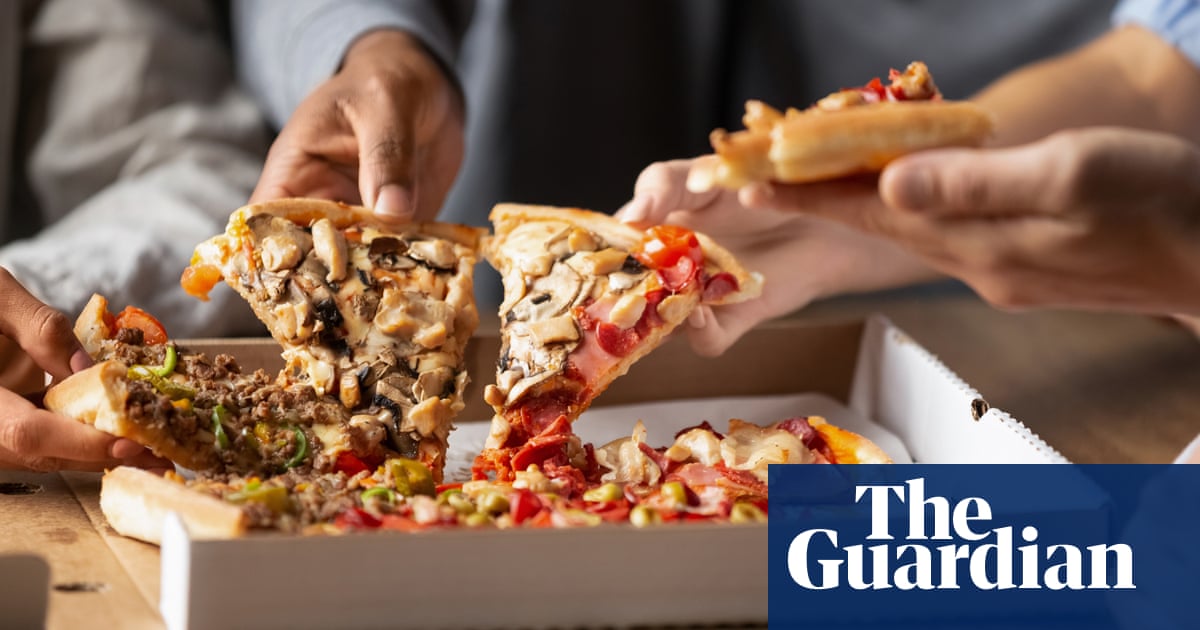Some takeaway meals contain more calories in one sitting than someone is advised to consume in an entire day, a study of British eating habits has revealed.
Cafes, fast-food outlets, restaurants, bakeries, pubs and supermarkets are fuelling the UK’s obesity crisis because so many meals they sell contain dangerously large numbers of calories, it found.
Six out of 10 takeaway meals contain more than the 600-calorie maximum that the government recommends people should stick to for lunch and dinner in order to not gain weight, according to the research, which was carried out by the social innovation agency Nesta.
One in three contain at least 1,200 calories – double the recommended limit.
Since 2018 the government has recommended that people should have no more than 400 calories at breakfast, and 600 more at lunchtime and again in the evening, with women and men consuming no more than 2,000 and 2,500 calories respectively across a 24-hour period, with the rest in snacks.
However, a pizza and chips contains more than either daily maximum – a huge 3,142 calories. A pizza typically has between 2,000 and 2,400 calories, while a burger, chicken nuggets, side and soft drink weigh in at a significant 1,658 calories, Nesta found. Fish and chips, that ever-popular staple of the British diet, is well over the 600 limit too at 1,425 calories.
“Our analysis shows that people are purchasing takeaway meals that contain more calories than the recommended allowance for a whole day. This should ring alarm bells for policymakers,” said Lauren Bowes Byatt, the deputy director of Nesta’s health team.
Britons spend an estimated £21.4bn a year on fast food and takeaway dishes. The market is rapidly growing as consumers increasingly opt for convenience rather than home-cooked food, often ordering online or by phone. Three in five people eat takeaway food at least once a week and 11% daily.
The calorie-laden nature of so many takeaway meals sparked claims that the outlets represent the irresponsible “wild west” of Britain’s consumer environment.
“For much too long the out-of-home sector has been the ‘wild west’ of the food industry due to its lack of consistency and transparency when it comes to the number of unnecessary calories – not to mention salt and sugar – added to meals,” said Sonia Pombo, a nutritionist and campaign lead at Action on Salt.
“Unlike retailers who are legally obliged to declare nutritional information on-pack, out-of-home in general appears to have little regard for public health. It’s therefore imperative that the next government takes decisive action and enforces calorie, salt and sugar reduction targets in order to create a level playing field and a more sustainable food environment longer term.”
While takeaway pizzas are on average the most calorific product Nesta studied, sandwiches and wraps contribute more calories to overall food intake because so many more of them are sold – 1.2bn a year – compared with just over 200m pizzas.
Nesta analysed what food 5,800 people in England, Scotland and Wales bought between April and December 2021 alongside other data from the University of Cambridge and consumer groups Kantar and NIQ Brandbank.
It found that:
-
Supermarket meal deals – usually comprising a sandwich, snack and drink – contain on average 780 calories, more than the 600 advised.
-
Burgers are the most popular takeaway dish in England, Scotland and Wales, followed by chips, fries or wedges.
-
People consume an average of 300 calories a day in takeaway food and drink.
-
Non-alcoholic drinks, especially coffee and fizzy soft drinks, contribute 12% of all the calories consumed by people in out-of-home premises.
Kate Nicholls, the chief executive of UKHospitality, which represents venues such as pubs and hotels, said: “Hospitality offers everything from a healthy lunch to a celebratory treat on a special occasion. The sector strives to offer a wide range of options for customers to pick from, including ever more healthy choices through new menu items, reducing portion sizes and adapting dishes themselves.”
Andrew Opie, the director of food and sustainability at the British Retail Consortium, which speaks for supermarkets and large takeaway franchises, said many outlets were helping consumers to eat more healthily.
“Responsible retailers selling out-of-home food are making progress supporting customers to make healthier choices in the food they buy through better calorie labelling, reformulation of products, and portion control. More is needed to tackle obesity and this will require government action.”

